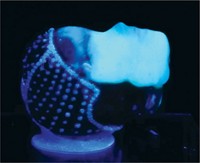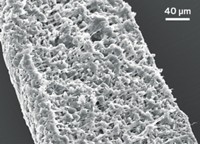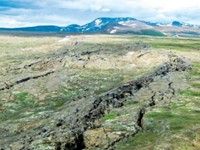Advertisement
Grab your lab coat. Let's get started
Welcome!
Welcome!
Create an account below to get 6 C&EN articles per month, receive newsletters and more - all free.
It seems this is your first time logging in online. Please enter the following information to continue.
As an ACS member you automatically get access to this site. All we need is few more details to create your reading experience.
Not you? Sign in with a different account.
Not you? Sign in with a different account.
ERROR 1
ERROR 1
ERROR 2
ERROR 2
ERROR 2
ERROR 2
ERROR 2
Password and Confirm password must match.
If you have an ACS member number, please enter it here so we can link this account to your membership. (optional)
ERROR 2
ACS values your privacy. By submitting your information, you are gaining access to C&EN and subscribing to our weekly newsletter. We use the information you provide to make your reading experience better, and we will never sell your data to third party members.
Polymers
PVA-based gel removes dirt from paintings
Large, disordered pores allow the gel to capture soil without damaging pigments
by Gina Vitale
March 21, 2020
| A version of this story appeared in
Volume 98, Issue 11
The paints used in many works of art contain additives that are often sensitive to cleaning solvents, so art conservators must weigh the risks of damaging works against the benefits of cleaning them. To ease this burden, Piero Baglioni and colleagues at the University of Florence have created poly(vinyl alcohol) (PVA) gels that can be placed directly on paintings, absorb soil, and be removed without damaging the texture or pigment (Proc. Natl. Acad. Sci. U.S.A. 2020, DOI: 10.1073/pnas.1911811117). First, researchers mix high- and low-molecular-weight PVAs in an aqueous solution, then subject the mixture to one or three freeze-thaw cycles. During the freezing process, ice grows in dendrite-like needles. Because the mixture consists of two types of PVA, these ice needles are disordered, allowing for the formation of large, disordered pores, similar to those of a sponge. The pores remain after the mixture is thawed. Baglioni says the resulting product—called a twin-chain polymer hydrogel—has never been previously synthesized. “This is a new class of gel,” he says. In collaboration with the Peggy Guggenheim Collection, the researchers tested the gels on two solvent-sensitive Jackson Pollock paintings. The gel removed soil without damaging the pigment. Baglioni says his team’s next paper, to be published in Heritage Sciencelater this year, will describe cleaning the Picasso painting L’Atelier.





Join the conversation
Contact the reporter
Submit a Letter to the Editor for publication
Engage with us on Twitter